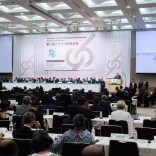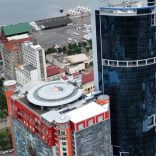Mozambique: Prime Minister visits Japan with Expo Osaka, Joint Business Forum in the agenda
Mozambique “needs partial debt relief” – expert

DW (File photo)
This week, the Government of Mozambique officially announced its inability to pay the next instalments of the debts of the public companies benefiting from the so-called hidden loans, and has said repayments must be restructured.
For German expert Jürgen Kaiser, coordinator of the Alliance of Non-Governmental Organisations, the case is clear.
“The country is insolvent and, from that perspective, this is bankruptcy. Debt restructuring is inevitable, because the state will not be able to write off all debts. More interesting is the question: which creditors will not receive any more payments?”

At the moment, Kaiser says, it appears that the Mozambican government tends to limit the suspension of payments to the so-called hidden debts incurred by the three Mozambican companies Ematum, Proindicus and MAM and guaranteed by the state. Maputo concealed the sum of EUR 1.28 billion from the Mozambican people and the international institutions that financially support the country for a long time. The ultimate disclosure of the existence of these debts has aggravated an already deep economic crisis resulting from the fall in commodity prices and rampant devaluation of the metical.
Mozambique needs debt forgiveness
The International Monetary Fund (IMF) suspended its aid to Mozambique and forced the establishment of an independent investigation into the undisclosed debt. An important step forward, says Kaiser, while adding: “I doubt that the non-payment of the ‘hidden loans’ is enough, taking into account the very high level of government debt even before the acknowledgement of these debts. So it seems to me that this may be a good time to reconsider the repayment of all debts under a single coherent conversion process. But this decision obviously rests with the Government of Mozambique.”
According to a Ministry of Finance of Mozambique presentation to creditors, public debt will reach 130 percent of gross domestic product this year, making a downward revision of economic growth to 3.7 percent unavoidable, and making even more unsustainable the repayment of debt that had already skyrocketed due to the depreciation of the national currency, the metical.
Kaiser, whose organisation erlassjahr.de argues that poor countries should have greater freedom in decisions on the restructuring of their debt and processing of insolvencies, says that a solution to the Mozambican crisis is possible.
“Mozambique needs a coherent insolvency plan which includes partial debt relief, perhaps under the auspices of the United Nations. But it may not be for the creditors to decide which debt is sustainable or which is not. The result in the past was that some countries failed to get out of their debt crises for thirty years.”
Kaiser does not see debt renegotiation jeopardising future foreign investment. A partial forgiveness of debt always makes the debtor more interesting to new investors. This was the case in Mozambique when debt conversion between 2001 and 2005, opened the country’s access to capital markets, Kaiser says.
“This argument that debt relief closes the tap of investment is very popular among creditors, but, from an economic point of view, it is complete nonsense,” he says.













Leave a Reply
Be the First to Comment!
You must be logged in to post a comment.
You must be logged in to post a comment.